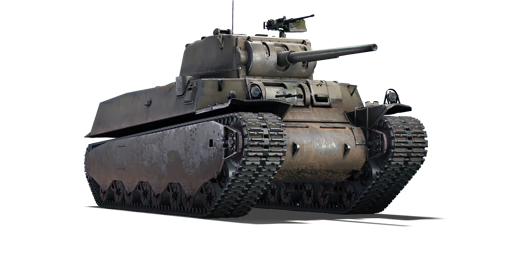In response to World War II breaking out across the Atlantic, the US decided to develop a new 50-ton heavy tank for their army, designated as T1. The design utilized a turret that held two cannons, a 3-inch tank gun and a 37 mm gun mounted side-by-side. Further development on the type of transmission to use with the heavy tank culminated with the T1E2 cast construction variant that utilized a torque converter transmission design was selected for standardization as the M6 heavy tank, with a second variant T1E3 with the same transmission that was constructed by welding was selected as the M6A1*. A total of 40 tanks from the M6 family were assembled, 12 of which were the M6A1 variant. However, by the time these heavy tanks were ready for mass production, the U.S. Army had lost interest in them, considering the M4 Sherman as a better solution in terms of reliability and cost-effectiveness.
Introduced with the release of the American ground tree in Update 1.45 "Steel Generals", the M6A1 is a pretty unique tank in the US tech tree due to the dual-armament configuration in the turret. The tank has two 12.7 mm MGs in the hull which are effective for taking out lightly armoured vehicles such SPAAs. It is a large tank, but can be quite mobile due to the use of a powerful Wright G-200 engine (the same engine powering the B-17 Flying Fortress bomber) to propel it through a battlefield. Despite its in-game role as a heavy tank, the large size, mediocre mobility, and questionable armour for a heavy tank makes the M6A1 more well suited for second-line combat roles. Additionally, its slow reverse speed limits its ability to quickly retreat to cover when necessary.















